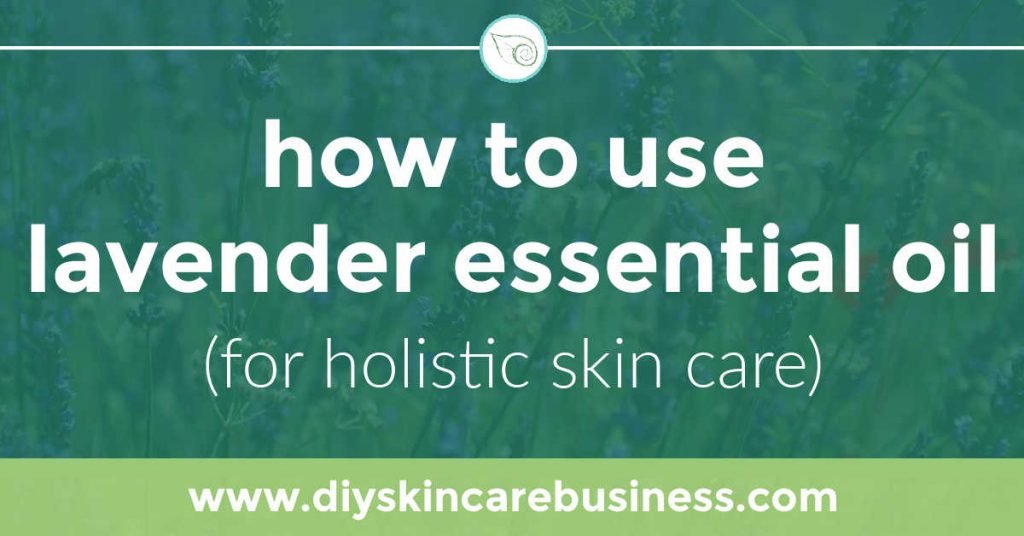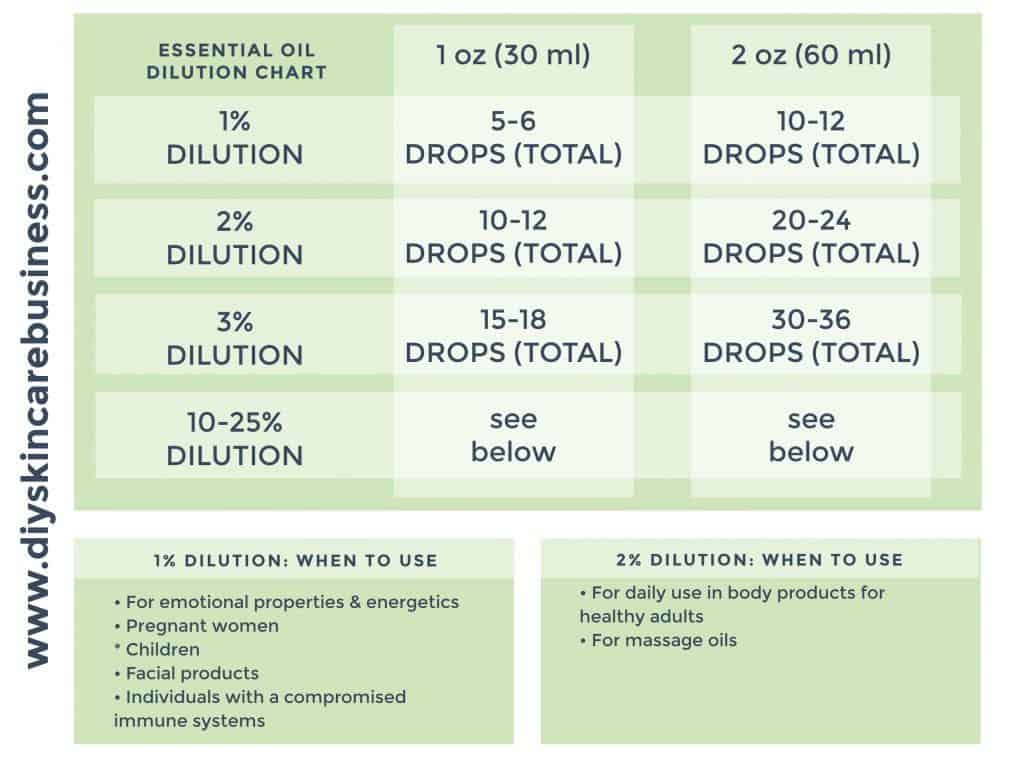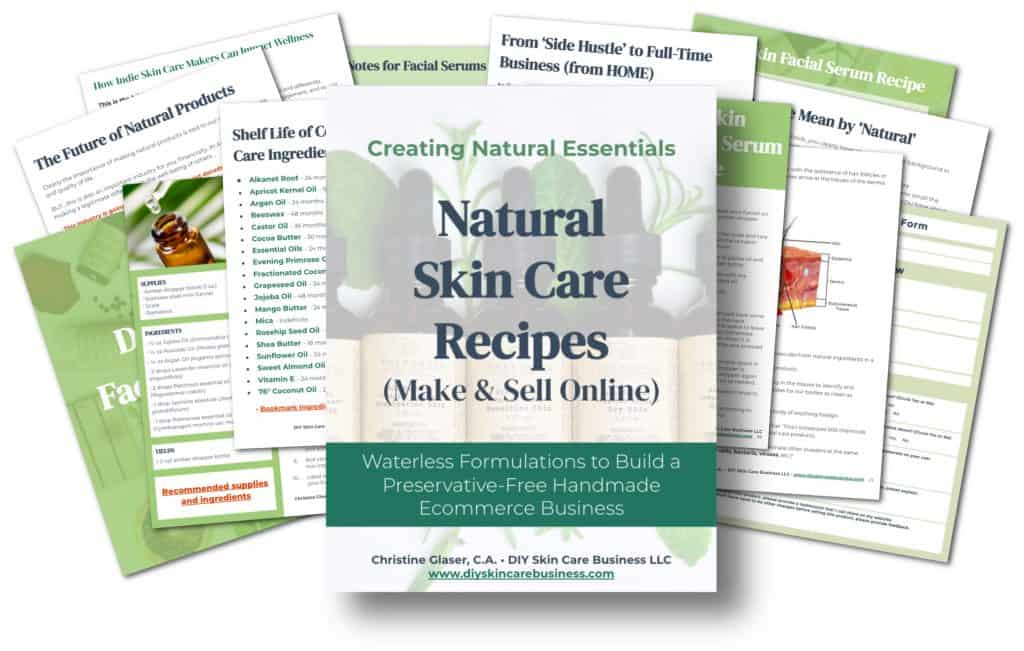If you’re a handmade skin care maker, learning how to use lavender essential oil for holistic skincare is going to change the way you think about your entire product line.
New to the essential oil game?
If this is you, welcome! This post is going to break it down nicely and easily – lavender is the PERFECT oil to get introduced to first.
Or are you a seasoned essential oil veteran (…and not quite sure why you opened this post…because quite frankly, you’re ‘over’ the attention that lavender always seems to get)?
If THIS is you, sift through the brief introduction and sit tight for a look into the chemical composition of lavender that may rejuvenate your affection for the most well-known oil out there.
Whatever your background, you’ll walk away from this post with a handful of personal-use DIY recipe ideas to nurture your skin (and total wellness) holistically.

This post may contain affiliate links, meaning I get a commission if you decide to make a purchase through my links (at no cost to you). Please read the disclosure for more information.
Lavender Essential Oil Profile:
What is Lavender Essential Oil?
Some plants have special cells inside of them that cause them to be highly fragrant.
In the case of lavender, these aromatic cells are in the purple flowers.
To make lavender essential oil, these flowers are put through a special process called steam distillation where the volatile components (ones that can evaporate) are separated from the plant material and voila! (Watch a home-based distillation process)

Essential Oil Chemistry 101
As you most likely remember from your grade school science class, everything is made up of something smaller.
An apple has around 300 substances, including water, glucose, fructose, lignin, iron, calcium, magnesium, etc.
The composition of air includes nitrogen, oxygen, argon, carbon dioxide, methane, etc.
So it makes sense that essential oils are made up of smaller molecules as well, and most have somewhere in the range of 200 different parts (constituents.)
This mix of molecules is what gives each oil its ‘personality’.
Some of these molecules are only in super teeny-tiny trace amounts. Others have significant percentages in a certain component.
These larger percentages of a certain molecule (or chemical family) are what ‘drive’ the use of an essential oil, meaning how an individual oil is USED and for WHAT reasons.
Most Prominent Components in Lavender
Lavender (Lavendula angustifolia) is the highest in percentages of Linalool (27.73%) and Linalyl acetate (29.7%).
As you can see in the charts below, these percentages are VERY high compared to the other constituents outside of the red boxes (an average of 0.05%).


The charts above are taken from a GC/MS report for a batch of Lavandula angustifolia from Bulgaria on December 9, 2020 (LOT L40116) – however, most lavender (of the same species) are rich in the same components.
Linalool (Monoterpenol Chemical Family)
Research supports that linalool has the following therapeutic actions:
airborne antimicrobial, analgesic, anti-anxiety, antibacterial, anticonvulsant, antifungal (candida), anti-inflammatory, antinociceptive, antioxidant, antispasmodic, antitumoral, antiviral, cognition enhancement, hypotensive, immunostimulant, sedative
Linalyl acetate (Ester Chemical Family)
Research supports that linalyl acetate has the following therapeutic actions:
analgesic, antibacterial, anti-inflammatory, antinociceptive, antioxidant, antitumoral, antispasmodic, antiulcerogenic, immunostimulant, sedative, vasorelaxant

Why is Lavender EO Chemistry Important?
If the above information has been gibberish to you, no fear.
You don’t need to know that amount of detail to successfully make skincare products.
It is simply meant to illustrate the ‘science-backed why‘ behind using lavender essential oil for HOLISTIC skincare (and it’s my job as an aromatherapist to give you that WHY!).
In the descriptions of the prominent lavender components above, notice the RANGE of benefits:
This chemistry breakdown shows that lavender affects:
- our skin when used topically
- the actual physiology of our body (the way our body parts function)
- how our brains perceive and react to its current state and environment
Clearly with that assortment of therapeutic properties, lavender has so many more benefits than simply using it in a candle because ‘it smells good’.
Safety Notes for Lavender Essential Oil
Before we move onto HOW to use lavender oil holistically, you need to hear the safety parameters.
Lavender is generally referred to as the ‘safest’ oil there is, that it is ‘kid friendly’ and gentle.
All of these are true, but you can’t just sprinkle it around without abandon.
Different types of lavender:
The lavender that we have been talking about in this post is Lavandula angustifolia.
There are over 45 different species of lavender and over 450 varieties that have different uses.
Not all lavenders are created equal.
As an illustration, there is a species called spike lavender (Lavandula latifolia), and it has stimulating components (the opposite of calming) and should be avoided before bedtime.
Similarly, people sometimes purchase lavandin (Lavandula x intermedia) in error (thinking it’s a different way to spell ‘lavender’) – this is a hybrid between ‘calming lavender (angustifolia)‘ and ‘stimulating lavender (latifolia)’.
Long story short, make sure you are getting the lavender you intend before you purchase it.
Dilution rates:
When using lavender on the skin for daily use, you HAVE to stick to the dilution chart below.
Essential oils are way too strong to apply to the skin ‘neat’ (on their own), so they need to be added to a carrier oil for safe dilution before applying to the skin.
Pregnancy/nursing:
Lavender (Lavendula angustifolia) has been noted as a ‘safe’ oil for use during pregnancy, but there are still rules to follow.
Kids:
Likewise, though lavender (Lavendula angustifolia) is noted as being ‘kid safe’, strict rules apply:

Grab a FREE copy of this essential oil dilution chart here: Skin Care Maker’s Reference Pack
What is ‘Holistic’ Skincare?
When something is ‘holistic’ it means all of the parts (of a whole) are intimately interconnected.
In holistic health, you consider the treatment of the whole person, taking into account mental and social factors rather than just the immediate symptom at hand.
When applying this approach to skincare, you’re not just going to hand over a dry skin facial serum (though this linked recipe is AMAZING) to combat eczema patches.
From the view of a holistic skincare entrepreneur, you’ll also want to make sure that your customer is also:
- Hydrating throughout the day
- Getting enough sleep
- Managing stress appropriately
- Eating healthfully, exercising regularly, etc.
All of these factors (and more) contribute to skin health – no amount of skin care product can ‘fix’ skin that isn’t being cared for with a mindful lifestyle.

Lavender Essential Oil and Holistic Skincare
Mental Wellness:
Skin care and mental wellness are so woven together.
When stress spikes (or anxiety, depression, etc.), so does hormone imbalance…or perhaps vice versa.
When this happens, the body’s usual ability to combat inflammation and bacteria drops considerably.
The result? Acne. Eczema. Increased sebum (oil) production. Hives.
Lucky for us, the lavender essential oil health benefits are profound, even in stress-relieving effects thanks to its high linalool content.
Using lavender throughout the day can help manage stressful situations and take that feeling of ‘being at a 10’ (fight or flight) down to a calmer 0-3 zone (rest and digest).
The easiest way to use lavender essential oil throughout the day is through inhalation methods:
Calming Diffuser Blend
- Fill a diffuser with water and add:
A diffuser is a device that disperses essential oils in the air so that you can receive benefits through inhalation.
The one shown here is a ceramic electric diffuser.
Calming Aromatherapy Roller Blend
- Fill a roller ball with carrier oil and add:
- 5 drops cedarwood (Juniperus virginiana)
- 3 drops sweet orange (Citrus sinensis)
- 2 drops bergamot (Citrus bergamia)
- 2 drops lavender (Lavandula angustifolia)
- 1 drops neroli (Citrus aurantium var. amara)
An aromatherapy roller is a small bottle of carrier oil and essential oils mixed together so that you can apply the blend to your pulse points throughout the day/night.
This method of application allows you to receive the benefits of essential oils through absorption and inhalation.
Calming Aromatherapy Inhaler Blend
- Put a fresh cotton wick in an inhaler vessel, drop on the following oils, and cap tightly:
- 10 drops sandalwood (Santalum album)
- 1 drop lavender (Lavandula angustifolia)
- 1 drop neroli (Citrus aurantium var. amara)
- 1 drop bergamot (Citrus bergamia)
An aromatherapy inhaler is a small container that holds a cotton wick inside that soaks up essential oils. This allows for quick and easy inhalation of oils without them touching the skin.
Muscle/Physical pain:
Can pain actually affect skin’s health? You betcha.
When in pain, we all tend to breathe more shallowly, taking short, irregular inhales and exhales instead of deep, rejuvenating belly breaths.
Lack of oxygen intake and carbon dioxide output doesn’t allow the body to ‘clean’ the gunk out as it was designed to…which reduces cell turnover…which leads to dull skin and breakouts.
We also know that if we’re in physical pain, we’re less likely to exercise.
If we don’t exercise regularly, we’re not getting that necessary respiratory and circulatory work. Our bodies have a harder time managing stress. We don’t sleep as well.
EVERYTHING IS CONNECTED.
Lavender for the win again.
Lavandula angustifolia is a natural analgesic, anti-inflammatory, and sedative (thank you linalyl acetate and linalool).
You can use lavender in stress and tension blends such as:
Tension Massage Oil Blend
- 1 oz carrier oil
For massage purposes, sweet almond oil is a great option to try. It is odorless, has skin-loving nutrients, and doesn’t immediately absorb for extended massage use.
Massage Oil Blend for Tight Muscles
- 1 oz carrier oil
- 3 drops black pepper (Piper nigrum)
- 2 drops cardamom (Elettaria cardamomum)
- 4 drops eucalyptus (Eucalyptus globulus)
- 4 drops lavender (Lavandula angustifolia)
- 4 drops rosemary (Rosmarinus officinalis ct. camphor)
If dealing with a nut allergy or working with dry and/or sensitive skin, apricot kernel oil is another great option to use for massage.
Bath Salt Blend for Aching Joints
- 1 oz coarse-grain Himalayan salt
- 1 tsp liquid castile soap
When choosing types of salt for use in baths or foot soaks, a coarse grain Himalayan salt has the best blend of minerals (magnesium, potassium, calcium chloride, and bromides).
Sleep:
You’ve heard this. You know this.
Sleep is essential to having healthy skin.
During true restful DEEP sleep, the skin repairs itself – attacks those dreadful free radicals from sun exposure and makes more collagen.
Our stress can’t be in the ‘Red Zone’ when we’re sleeping, so our immune systems are able to address bacteria and inflammation a heck of a lot better.
Using lavender essential oil for holistic skincare takes the cake again for its sedative properties that help us to deal with insomnia and overly-active brains before bed.
The ways to use lavender to enhance sleep are infinite. Some tried-and-true blends are:
Bedtime Diffuser Blend
- 5 drops bergamot (Citrus bergamia)
- 5 drops lavender (Lavandula angustifolia)
- 5 drops Roman chamomile (Chamaemelum nobile)
If you’d prefer not to run an electric diffuser at night (or don’t have an outlet available), there are clay and lava stone diffuser options as well.
Simply drop the essential oils above directly onto the lava stones or clay discs, depending on the version you decide on.
Bedtime Massage Oil Blend
- 1 oz carrier
- 3 drops German chamomile (Matricaria recutita)
- 3 drops lavender (Lavandula angustifolia)
- 2 drops sweet orange (Citrus sinensis)
Grapeseed carrier oil is an excellent base for nighttime massage, as it is light and easily absorbed – no worry about being greasy and rolling over onto clean sheets.
Bedtime Inhaler Blend
- Put a fresh cotton wick in the inhaler vessel, drop on the following oils, and cap tightly:
- 2 drops lavender (Lavandula angustifolia)
- 2 drops roman chamomile (Chamaemelm nobile)
- 2 drops sweet marjoram (Origanium majorana)
If you find that you love to use aromatherapy inhalers and/or would prefer a reusable aluminum and glass version, the set below is ideal. You will need to purchase extra cotton wicks on occasion.
Lavender Essential Oil and ‘Regular’ Skincare
Outside of holistic uses, the lavender essential oil SKIN benefits makes it the queen of ‘regular’ skincare, meaning you can use it very effectively by using it topically (diluted) for many skin concerns.
This is a fantastic ‘first-aid’ oil to have on hand for applying to burns, bug bites, rashes, irritations, infections, and other superficial damage.
All of the recipes linked below I developed as a certified aromatherapist and have made them to sell in my own handmade skin care product line.
If you are a fellow skin care entrepreneur looking for products that go over well with a natural-living-loving target market, these recipes will be a goldmine for you.
Topical Lavender Skincare Recipes

The Natural Skin Care Recipe (e)Book
The Best Lavender Essential Oil Distributor
As a certified aromatherapist, Plant Therapy is my go-to essential oil distributor.
You can buy lavender essential oil in 5, 10, 30, and 100 mL sizes, as well as bulk sizes if you’re a high-volume maker.
Plant Therapy also carries Lavender Hydrosol and pages of pre-made lavender products if you’re not ready to make your own yet.

All my best to you, fellow maker, as you begin using lavender essential oil for HOLISTIC skincare – starting to blend with a lens of overall wellness is a game-changer.
I look forward to hearing how this approach strengthens your handmade skin care journey!
Grow Your Skin Care Business!
Browse through the resources below to boost your handmade business visibility and profitability!








